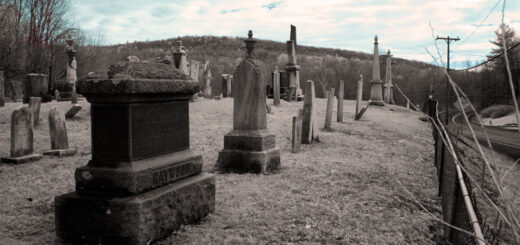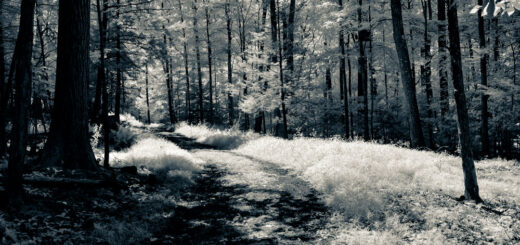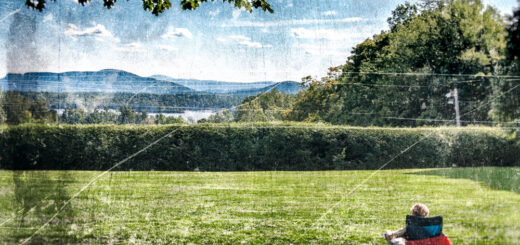Historic Home
 One June day some years ago I made a trip to Vermont to visit The Robert Frost House Museum. It’s just up the road from Shirley Jackson’s Hill House and isn’t haunted in the same way, but I figured any place an artist has spent a lot of time working will retain a lingering whiff of the creative spirit. You just have to be on the lookout for it.
One June day some years ago I made a trip to Vermont to visit The Robert Frost House Museum. It’s just up the road from Shirley Jackson’s Hill House and isn’t haunted in the same way, but I figured any place an artist has spent a lot of time working will retain a lingering whiff of the creative spirit. You just have to be on the lookout for it.
I pulled into the parking lot next to the house. A sign at the gate said: “Open.” I walked through the gate and headed up to the house. A sign next to the door said: “Come In.” I went in and first thing I saw was a desk with a sign on it that said: “Information.” Behind the desk was an older woman with eyes seething with facts. In front of the desk stood a young family—a couple with two little girls.
The woman behind the desk was administering information about the dangers this family would face upon their exit from the Robert Frost House. “Don’t even sit on the park benches around here,” she intoned. “The ticks have learned that people like to sit on benches. They hide there and wait for you! And they will bite! It’s best that you don’t even go outside. Stay inside, where it’s safe.” She directed her gaze upon the children. “You want to stay safe, right?”
One of the little girls was on the verge of tears. The parents exchanged an apprehensive look. There would be no free and easy wandering for them in Robert Frost’s backyard. Grabbing the hands of their little girls, they fled out the door toward their car. Now it was my turn.
I stepped up to the desk. “Welcome to the historic home of Robert Frost,” the woman said in a flat voice. So much for a dignified arrival experience.
“How much to get in?” I asked.
“Six dollars.”
I handed it over. She handed me a one-page guide to the museum and pointed to a door. Over the door hung a sign: “Start Here.” I walked through the door into a place called “The Robert Frost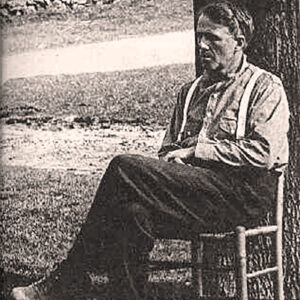 Room.”
Room.”
The walls were lined with informational display panels packed with words and pictures pertaining to the poet and the time he spent living in Vermont. The only piece of furniture in the room was an old couch once belonging to Frost but not when he lived in this house. A sign on the couch said not to sit on it. I took a look at the display panels and learned that this is not the only historic home associated with Robert Frost. There’s another one close by here in Vermont and two more in New Hampshire. I thought maybe after I finished here I would go check out that other historic Robert Frost home. The writing on the wall said it was only a couple miles from this one but provided no directions. I made a note to ask for them at the information desk on my way out.
I continued to peruse the walls in the Robert Frost Room. Among the many words was a vintage photo of the poet in his middle years. He’s wearing suspenders and sitting in a wooden chair in front of a big tree. He looks like an important poet caught between writing poems, or maybe buying houses. The accompanying text explained that this picture was taken right outside in the yard: “You used to be able to look out that nearby window and see that very tree but it’s gone now.” I looked out the window to see for myself. Not much there but a tangle of vines and unkempt shrubs. I moved on to the next room.
This one was called, “The Stopping by Woods Room.” The one-page guide explained why: “This is the historic spot where Frost wrote one of his most famous poems, ‘Stopping by Woods on a Snowy Evening.’” I took a solemn look around the chamber. The décor of interpretive panels was complemented by a wooden table and a couple of chairs. The one-page guide explained: “The entire room is devoted to this poem—the story of how it was written, a facsimile of the handwritten manuscript, a controversial comma, a presentation of meter and rhyme, what the critics said about the poem, and what Frost said about it.” The poet composed this most famous of winter verses at the dining room table on a hot June morning in 1922. Ah poetry, what better way to escape the heat? I was disappointed to learn that the actual table Frost wrote on was “no longer here.” This one in the room was a facsimile—and it was for sale. I was tempted but couldn’t afford it. Besides, what would I ever write on it? I skipped reading the rest of the interpretive panels.
I exited The Stopping by Woods Room by another door and found myself back where it all began: in front of the information desk. The woman behind it did not look up from the crossword puzzle she was working on until I asked my question. “Where is this other historic Robert Frost House that’s near here?”
Her head shot up and she glared at me: “No! It’s private.” All that information in her head was ablaze. I could see it in her eyes.
I had another question. I ask it at every historic home I visit. “So, is this house haunted?” “No! No! No! Not that I’m aware of!”
“Okay,” I said, “I guess I’ll leave now.”
She went back to working on her crossword puzzle. I made a move toward the door. Before I could get there, the woman snapped: “Stop! I’ve got important information for you about what’s waiting out there.”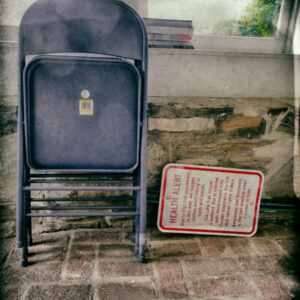
©John P. O’Grady
Originally appeared in The Mountain Eagle on May 14, 2021
